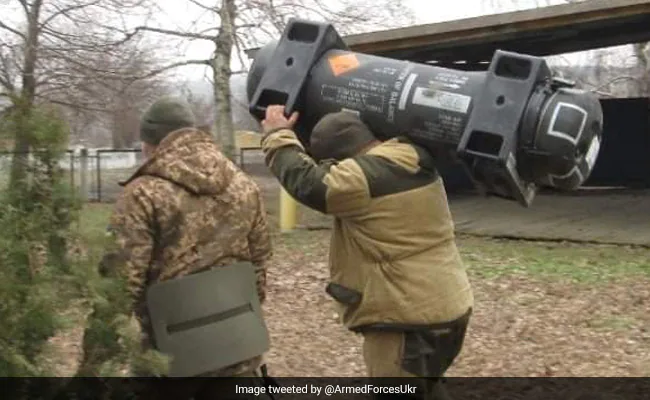As Russia’s military moves closer to Ukraine’s capital, Kyiv, US-made Javelin anti-tank missiles are gaining attention. These weapons allow the numerically inferior Ukrainian army to wreak havoc on their adversaries.
According to military experts, the lightweight but lethal weapon has allowed Ukrainian soldiers to inflict significant damage on Russian tanks and artillery.
According to American journalist Jack Murphy, who has been following the conflict in Ukraine, the Javelin missiles have a 93% kill rate.
How does the Javelin missile operate?
Raytheon and Lockheed Martin worked together to develop the anti-tank missile. According to the website of the latter, after launch, the missile automatically guides itself to the target (“fire and forget” system), allowing the gunner to take cover and avoid counterfire, or load a new missile.
It also has a gentler launch, making it difficult for the enemy to see where it came from.
According to the Lockheed Martin website, the gunner fires by moving the cursor over the selected target. The Javelin command launch unit then sends the missile a lock-on-before-launch signal. Javelin’s soft launch design allows it to be fired safely from inside buildings or bunkers.
According to Lockheed Martin, Javelin uses an arched top-attack profile to climb above its target for improved visibility before striking where the armour is weakest. That is why it is called the Javelin, as it represents the path of spears thrown in track and field events, which fall to the ground at steep angles.
The range and other details
The Javelin missiles have a range of 2.5 miles and can be fired both during the day and at night. Javelins can target any type of vehicle that emits heat because they also have a thermal scanner.
It can be operated by a single soldier, though carrying extra launch tubes would necessitate the use of more hands.
If there is a protection above it, Javelin ads can also target an enemy. The 46-pound shoulder-fired weapon is also capable of targeting helicopters.
“The Javelins are the most sophisticated and effective weapon the Ukrainians have, but they are not the most numerous,” Center for Strategic and International Studies’ Mark Cancian said.
How are these missiles helping Ukrainians?
Though there is no official data on the number of weapons destroyed by the Javelins in Ukraine, journalist Jack Murphy claims that 280 armoured vehicles were destroyed out of 300 shots fired.
“As the Russians realised Ukraine now had Javelins, their T-72 tanks in Donbas became less aggressive, and pulled further back from the frontlines,” Mr Murphy wrote in an article, quoting a US military official from the early days of the war.
The missiles are very effective at penetrating reactive armour, which is used to protect most tanks. This armour contains small amounts of explosives that detonate any incoming warhead. However, Javelins is designed to overcome this limitation.
According to Cancian, it is also easier to teach people how to use these missiles, which could be useful in Ukraine, where civilians are lining up to take part in the battle.
Limitations of Javelin missiles




















